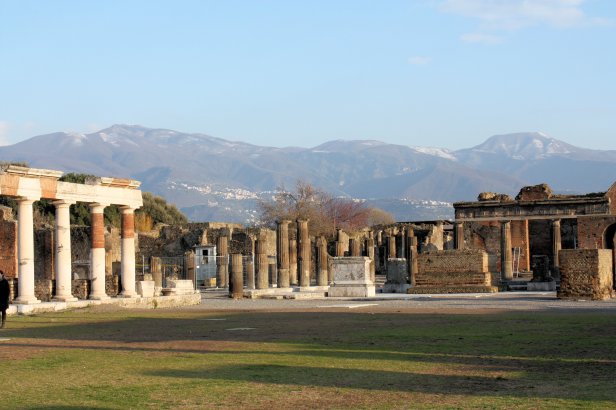 A lot of people have been to Pompeii, and a lot of bloggers have written extensively about the city. However, each perspective is unique, and no two people will experience the city in the same way. Pompeii was a thriving cosmopolitan Roman city near Naples, Italy. Although the city was conquered by the Romans in 80 B.C., it existed in one form or another for nearly 700 years before that. Archaeological evidence has recently proved that the eruption of Mt. Vesuvius in 79 A.D. was not the first seismic disaster Pompeii experienced, but it was the last.
A lot of people have been to Pompeii, and a lot of bloggers have written extensively about the city. However, each perspective is unique, and no two people will experience the city in the same way. Pompeii was a thriving cosmopolitan Roman city near Naples, Italy. Although the city was conquered by the Romans in 80 B.C., it existed in one form or another for nearly 700 years before that. Archaeological evidence has recently proved that the eruption of Mt. Vesuvius in 79 A.D. was not the first seismic disaster Pompeii experienced, but it was the last.
My experience at Pompeii was not that of just another tourist. My background in Roman History and love of archaeology led me to place Pompeii very high on my list of must-see places. Pompeii is a very special and sacred place that I’ve wanted to experience from the time I was twelve. All of the movies, the history channel re-enactments, and documentaries sparked my interest at an early age. The moment of awe finally came when I was standing at the gates of the city. Pompeii is just so big, and so much is perfectly preserved that I could write about it for ten posts. I’m not going to do that, I’m going to tell you about the one thing from Pompeii that left an impression on me for life. The casts of Pompeii’s victims, frozen in their final moment of life, with the pain still visible on their faces, left an impression on me that I will never forget. In all of my years of travel, nothing has moved me more than seeing these souls frozen in time, at their last moment of life. 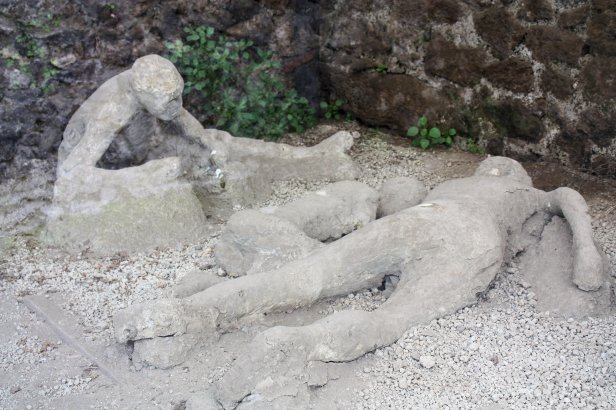


Of course there are many beautiful things to see at Pompeii, many perfectly peserved buildings, ancient mosaics and Latin Inscriptions, but once you see the casts of the people who died at Pompeii, it will stick with you forever. I could not tear myself away from that spot, staring at each cast intently, trying to make out their faces, imagining the horror they faced as a cloud of ash and poisonous gas from Mt. Vesuvisus smothered them to death. In the first photo above I imagined that the figure struggling to prop himself up is a man struggling to look upon his wife and child one last time. There are several places in Pompeii where you can view these casts, but the most famous is at the Garden of the Fugitives. The website shows that Garden of the Fugitives is crowded with tourists. However, I went in February and I was the only one at that spot at the time. I try my best to travel in the off-season, and the rewards almost always outweigh the inconveniences. If you don’t mind being a little cold, or a little wet, or getting up before everyone else, then you will almost always be rewarded with a unique and special visit. 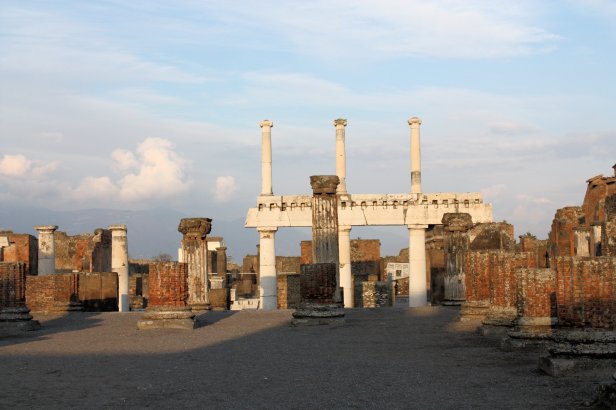

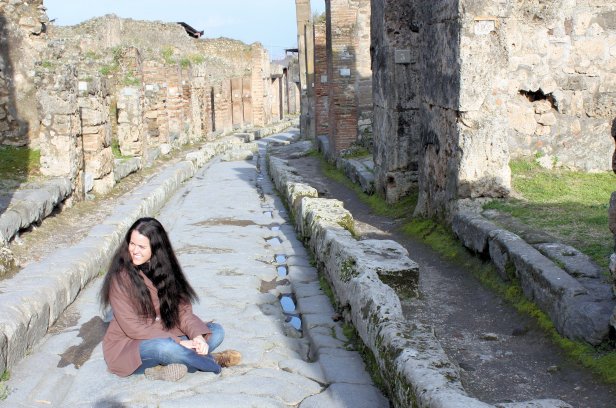 I could share three-hundred photographs of Pompeii, but I’ve tried to narrow them down to just a few of my favorites. Like the one above, where you can still see the wheel ruts from Roman wagons almost two thousand years ago! I only had one day at Pompeii, but honestly I could go there ten more times and see something new each visit. In addition to the outstanding preservation of the archaeological record under the ash, Pliny the Younger wrote a first-hand account of the disaster. He describes the event for us in great detail. His uncle, Pliny the Elder, was a Naval Commander who died trying to rescue the stranded citizens stuck in Pompeii.
I could share three-hundred photographs of Pompeii, but I’ve tried to narrow them down to just a few of my favorites. Like the one above, where you can still see the wheel ruts from Roman wagons almost two thousand years ago! I only had one day at Pompeii, but honestly I could go there ten more times and see something new each visit. In addition to the outstanding preservation of the archaeological record under the ash, Pliny the Younger wrote a first-hand account of the disaster. He describes the event for us in great detail. His uncle, Pliny the Elder, was a Naval Commander who died trying to rescue the stranded citizens stuck in Pompeii. 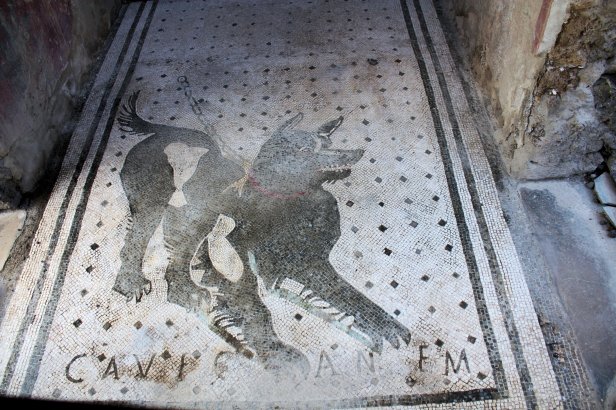 Pompeii was re-discovered again in 1599, and some of the first archaeological excavations in the world took place there in 1748. Archaeological fieldwork and conservation continues today. I have a great guidebook to the site, “Pompeii, A Practical and Complete Tour Guide of the City and Map of the Archaeological Zone.” I’m not usually into guidebooks, but for a place like Pompeii, it is a must-have. Even with the guidebook and a full day of exploration I feel like I missed a lot of the city. I’m really looking forward to a few more visits in order to gain a complete understanding of daily life at Pompeii.
Pompeii was re-discovered again in 1599, and some of the first archaeological excavations in the world took place there in 1748. Archaeological fieldwork and conservation continues today. I have a great guidebook to the site, “Pompeii, A Practical and Complete Tour Guide of the City and Map of the Archaeological Zone.” I’m not usually into guidebooks, but for a place like Pompeii, it is a must-have. Even with the guidebook and a full day of exploration I feel like I missed a lot of the city. I’m really looking forward to a few more visits in order to gain a complete understanding of daily life at Pompeii.
I won’t presume to say what is a must-see, but I will list for you my five favorite areas of Pompeii.
1. The Garden of The Fugitives
2. The House of Venus in the Shell (for its beautiful fresco)
3. The Via Stabiana (with its wagon wheel marks still visible)
4.The Pistrinum of Vicolo Toro (completely preserved bakery)
5. The Lupanar (or brothel house).  It should also be noted that the most famous mosaics and frescos of Pompeii, The Alexander Mosaic from The House of the Faun, and the Portrait of the Baker and his Wife, can only be seen at the National Archaeological Museum of Naples. Actually, almost all of the famous frescos and mosaics from Pompeii are not on site, but have been relocated to the Naples Museum for preservation and conservation. I found this out only after visiting Pompeii, and I was disappointed that I did not do the proper research in advance. I did manage to make it to Naples for a few hours, and it helps to tie everything together to see the images that once decorated the bare walls of Pompeii.
It should also be noted that the most famous mosaics and frescos of Pompeii, The Alexander Mosaic from The House of the Faun, and the Portrait of the Baker and his Wife, can only be seen at the National Archaeological Museum of Naples. Actually, almost all of the famous frescos and mosaics from Pompeii are not on site, but have been relocated to the Naples Museum for preservation and conservation. I found this out only after visiting Pompeii, and I was disappointed that I did not do the proper research in advance. I did manage to make it to Naples for a few hours, and it helps to tie everything together to see the images that once decorated the bare walls of Pompeii.
Pompeii is the most popular tourist attraction in Italy. The best time to go is as far into the off-season as possible. Archaeological excavations are still ongoing at Pompeii, and it is even possible to participate in an excavation for a few weeks. Conservation at Pompeii is a problem, even today, and even at such an important site. The money is just not there to preserve everything. In 2010, either through neglect, heavy rains, or a combination of both, the House of the Gladiators, which stood for more than two thousand years, collapsed into a pile of rubble.
More Information:


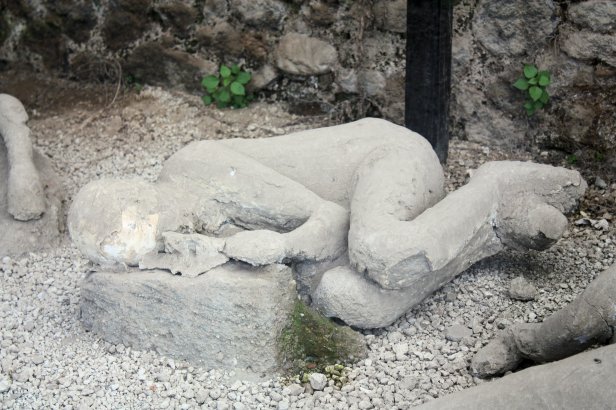

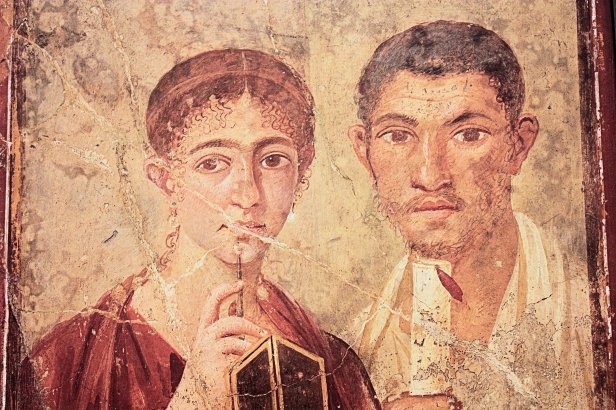
Beautiful pictures!
Robert, It is very close by and I spent half a day there. I wanted to write about Herculaneum also, but it would be a very long post! I think a few of the photos in the gallery are from there.
Thank you so much for your perspective on Pompeii. I’ve never been there myself, yet, but I really feel for the poor people who died in that eruption back in 79 A.D. It’s not just their faces that will stick with me but also what they would have thought as well, that sense of impending doom and dread and hopelessness and the knowing that the end is so very near. It makes me want to reflect on life so that I can live it to the full as you can never really know when your time is going to be up.
Absolutely amazing photos. Herculaneum is nearby ?